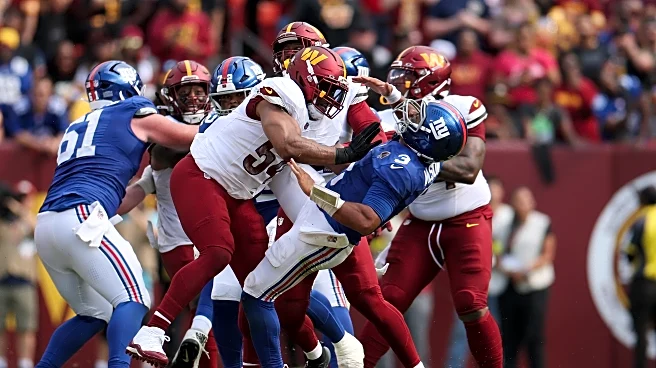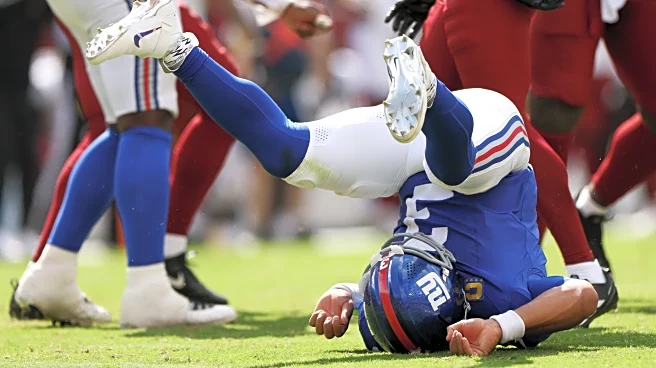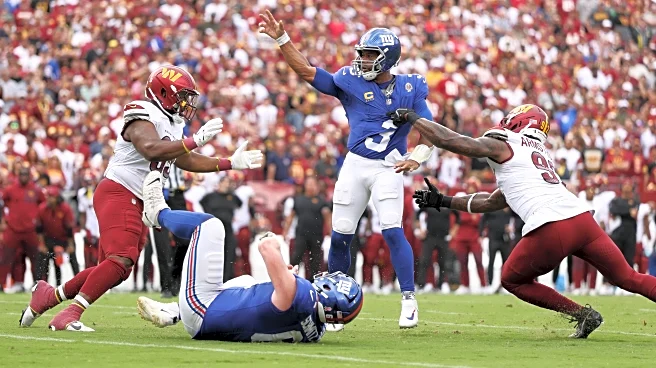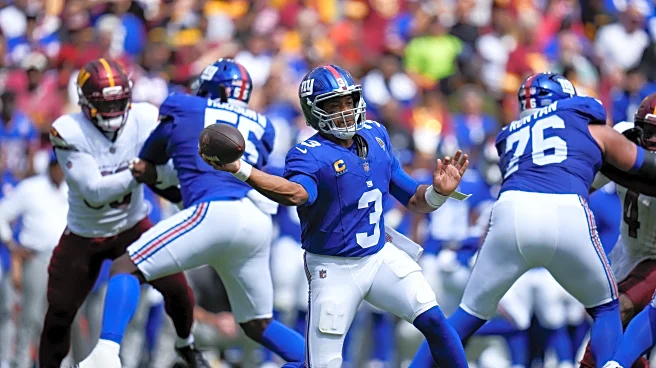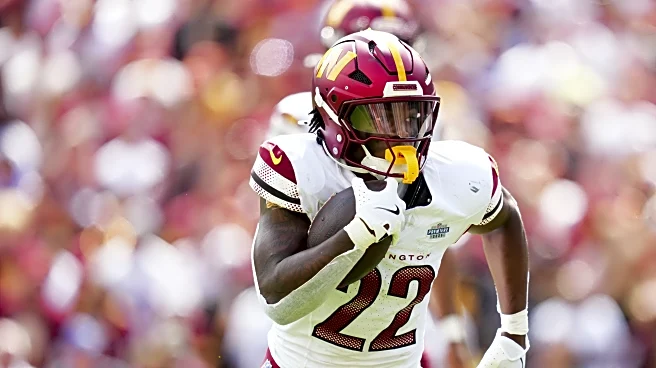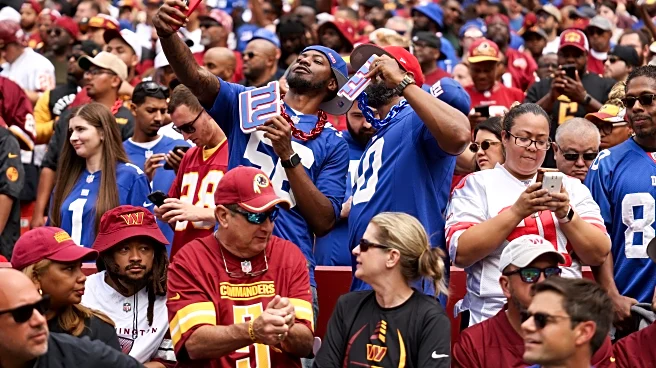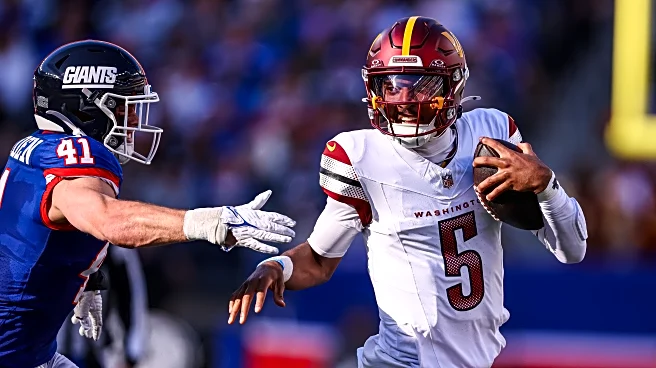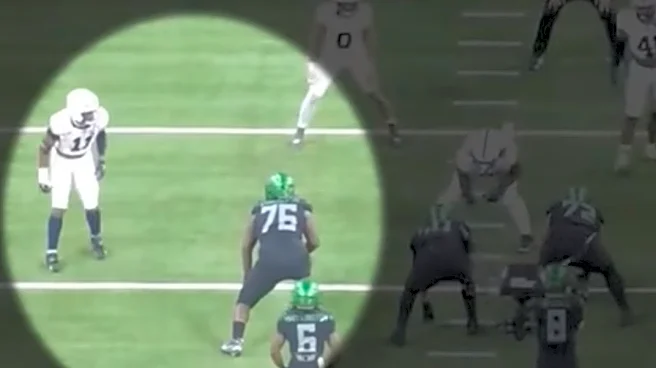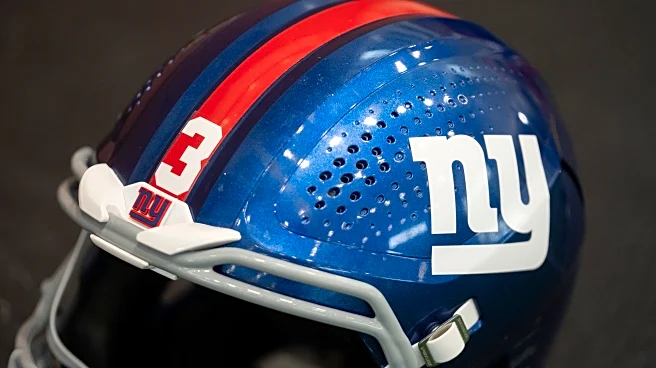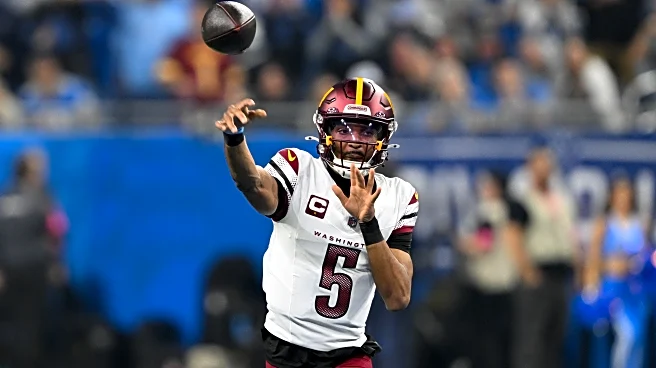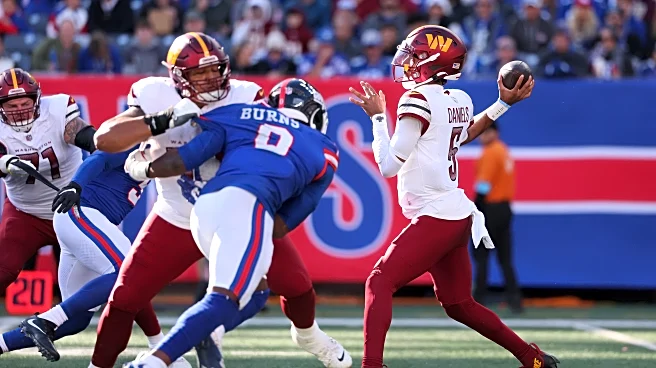
The New York Giants are a team of tradition. In yesterday’s opening week game against the Washington Commanders, the Giants honored their recent past as only they can:
- 2012: DAL 24, NYG 17
- 2013: DAL 36, NYG 31
- 2014: DET 35, NYG 14
- 2015: DAL 27, NYG 26
- 2016: NYG 20, DAL 19
- 2017: DAL 19, NYG 3
- 2018: JAX 20, NYG 15
- 2019: DAL 35, NYG 17
- 2020: PIT 26, NYG 16
- 2021: DEN 27, NYG 13
- 2022: NYG 21, TEN 20
- 2023: DAL 40, NYG 0
- 2024: MIN 28, NYG 6
- 2025: WAS 21, NYG 6
The only two times the Giants won their opener in the past 14 years were the only two times they have been to the playoffs since their last Super Bowl. Of course the Giants lost their opener in 2007 and 2011, so maybe all is not yet lost…nah.
There weren’t many expectations for this year’s team making the playoffs, much less the Super
Bowl, given their seemingly daunting schedule. What we did expect, though, was a tougher, maybe even dominant, defense and an emerging, dare we say competent, offense. We got neither yesterday. Let’s look at Pro Football Focus grades and snap counts to learn a little more about why this team laid its latest opening week egg.
Offense
PFF grades

PFF gave Russell Wilson a below-average 54.5 passing grade yesterday, with one big-time throw and one turnover-worthy play. More interesting is the pressure vs. no-pressure stats, for several reasons. QBs overwhelmingly play much worse under pressure than when kept clean (but not necessarily when blitzed, which leaves an open receiver if the QB makes the quick read). Yesterday Wilson only played a little better when kept clean, and his ADOT, which was small overall, was even smaller when kept clean than when pressured. We can see the pathetic ADOT in his passing chart:

When Wilson played the Commanders last year as a Steeler, he used most of the field, including four attempts beyond 20 yards, one of them the game winner to George Pickens. His overall stats were not much different from yesterday (14 of 28 for 195 yards), but with 3 TDs. Yesterday, though, Wilson only passed beyond 20 yards once, and a ton of his attempts were within 5 yards (past or behind) the line of scrimmage.
The other interesting thing is that Next Gen Stats had Wilson pressured on 22 of his dropbacks (48.9%), as opposed to PFF’s scoring of 17 (37.8%) pressured dropbacks. PFF uses an analyst to subjectively determine when a QB has been pressured. NGS uses a series of machine-learning models to identify pass rushers and the passer and a database of pressure probabilities to define a pressure as a dropback on which the pressure probability exceeded 75%. Take your pick. Maybe the 5 dropbacks NGS scored as pressured but PFF did not account for the fairly small difference in Wilson’s pressured vs. kept clean PFF score, and we can blame most of the poor offensive showing on the offensive line. Or maybe Wilson just played a bad game yesterday. Probably some of both.
Speaking of the offensive line:

The numbers are sorted on blocking snaps, not grade, to isolate the OL. Surprisingly, PFF gives two of the OLs, Greg Van Roten and Jermaine Eluemunor, above average pass block grades and only credits them with one hurry apiece (but also 2 penalties for Eluemunor). John Michael Schmitz (2 hurries) and Jon Runyan Jr. (1 sack, 2 hurries) scored in the average range, while James Hudson III (2 hits, 4 hurries, and a penalty) played poorly. It would be interesting to know to whom those 5 NGS-only pressures were attributed.
Clearer, though, is that all five OLs were subpar in run blocking. That was one of the big differences in the game yesterday. The Giants set up shop at the Washington 3-yard line yesterday and didn’t get into the end zone either time, resorting to passes with no one open and a gimmick pass to a rookie OL.
Now, on to the so-called “skill” positions: First, receiving:

When a running back (Cam Skattebo) is your best receiver and he only gains 12 yards, you know you’re in trouble. When your WR2 (Darius Slayton) plays 50 snaps and is only targeted once (unsuccessfully), you know you’re in trouble. When your TE1 drops 2 of the three balls thrown to him and his only catch is for 5 yards, while the TE you were excited about as a rookie has a catch for 14 yards but is only targeted once, you know you’re in trouble. At least both TEs pass blocked well. For the record, Johnson had a good 69.4 run block grade and Bellinger a better 78.7 run block grade. Chris Manhertz, the ostensible blocking TE, had a 51.9 run block grade, though he did have a good 74.5 pass block grade. Malik Nabers and Wan’Dale Robinson didn’t play great, but at least they did something to create some semblance of an offense.
Bellinger (84.4) and Skattebo (75.6) were the only Giants players with above-average total offense grades yesterday, but they were only on the field for a combined 23 snaps.
Next, rushing:

When your leading rusher is your QB – by a lot – you know you’re in trouble. Tyrone Tracy actually ran well (74.3) despite only having 24 yards. When 21 of your 24 yards are after first contact, you know you’re in trouble. Ditto Devin Singletary, only 9 yards but 6 of them after contact. Memo to Cam Skattebo: Don’t retire after one game, or your career rushing total will be -3, with a longest run of -1. Welcome to the Giants’ offensive (and I do mean offensive) run-blocking line.
Snap counts

- Wilson and the five starting OLs played every snap, with Marcus Mbow coming in as a jumbo package player twice.
- Nabers and Slayton played almost every snap, while Robinson played about 2/3 of the offensive snaps. Jalin Hyatt, the ostensible WR4, did not see the field, while Beaux Collins got 2 snaps.
- Johnson played almost 80% of the offensive snaps at TE, with Bellinger and Manhertz each getting roughly 1/4 of the snaps. That implies that the Giants were in 11 personnel about 80% of the time.
- Tracy got about 3/4 of the snaps at RB, with Singletary and Skattebo splitting the rest.
Defense
PFF grades

The Giants were somewhat better on defense than offense yesterday, with four players receiving above-average scores, and three of them being starters. Abdul Carter (81.5) had an impressive debut, sacking Jayden Daniels once, pressuring him two other times, and having one (TD-saving) tackle with no missed tackles. Dexter Lawrence had a quiet 78.5, with 3 tackles but no QB pressures. Brian Burns (71.0) was more visible, with 2 sacks in addition to 2 solo tackles and 2 assists. Kayvon Thibodeaux was just below PFF’s above-average threshold (67.9), but he had a sack and 2 hurries and one tackle with no missed tackles.
At the other end of the spectrum, Darius Muasau (30.0), pressed into action after Micah McFadden’s injury, was awful in pass coverage and run defense overall but had 2 tackles. Jevon Holland (41.5) had an inauspicious Giants debut, but his stat line was not terrible: His coverage grade was poor (42.0), meaning receivers were open, but he was only targeted 4 times with 1 completion for 19 yards. He had 5 tackles and 1 assist with no missed tackles. Chauncey Golston (43.1) had 11 snaps and did not make the stat sheet. Rakeem Nunez-Roches (49.9) had 32 snaps but only 1 assisted tackle.
In the middle of the PFF rankings, starting with the secondary: Deonte Banks played 11 snaps and was not targeted; Dane Belton had a hurry and 2 tackles but gave up a 12-yard completion; Cor’Dale Flott had 2 tackles and one miss and gave up 2 receptions in 4 targets for 52 yards but had the only pass breakup by a Giants defender; Paulson Adebo had 7 tackles and surrendered 2 completions in 5 targets for 18 yards; Dru Phillips had 4 tackles and 2 misses and allowed 5 receptions in 6 targets for 46 yards; and Tyler Nubin had 3 tackles, 3 assists, and 2 missed tackles while allowing 2 receptions in 2 targets for 17 yards.
At linebacker, Micah McFadden had a QB hit, a tackle, and an assist before being injured; Bobby Okereke had an impressive 9 tackles and 6 assists with one missed tackle but gave up 4 receptions in 4 targets for 46 yards.
On the defensive line, Roy Robertson-Harris did not make the stat sheet in 47 snaps; neither did D.J. Davidson but in only 15 snaps.
Snap counts

- Safeties Nubin and Holland were on the field for every snap, but the Giants apparently played dime a decent bit since Belton was on the field for 17 snaps as well; the PFF stats have Nubin and Holland each at free safety about half the time and Belton only on one snap, i.e., they were mostly in single-high MOFC.
- At CB, Adebo played every snap while on the other side, Flott played 84% of snaps and Banks the other 16%. If Shane Bowen followed the “Flott is starting and Banks will come in on third down” philosophy that he indicated before the game, that would mean that the Giants’ defense didn’t even get the Commanders’ offense to third down about half the time. Phillips played 84% of the snaps, all but one in the slot or the box.
- Okereke played almost every snap at LB, while Muasau played more than half the snaps after McFadden’s injury
- In the interior, Lawrence and Robertson-Harris each played the majority of snaps with Nunez-Roches getting most of the rest and Davidson and Golston gettting cups of coffee.
- On the edge, Thibodeaux and Burns played about 3/4 and 2/3 of snaps, respectively, while Carter in his debut saw the field a little over half the time. These allocations will be interesting to watch going forward given Carter’s auspicious debut. Per PFF, Thibodeaux lined up once in the box, once in the B-gap, and once over tackle; Burns twice in the box; and Carter 5 times in the box, once in the B-gap, and 4 times over tackle. (Golston, in his snaps, lined up strictly on the edge.)
